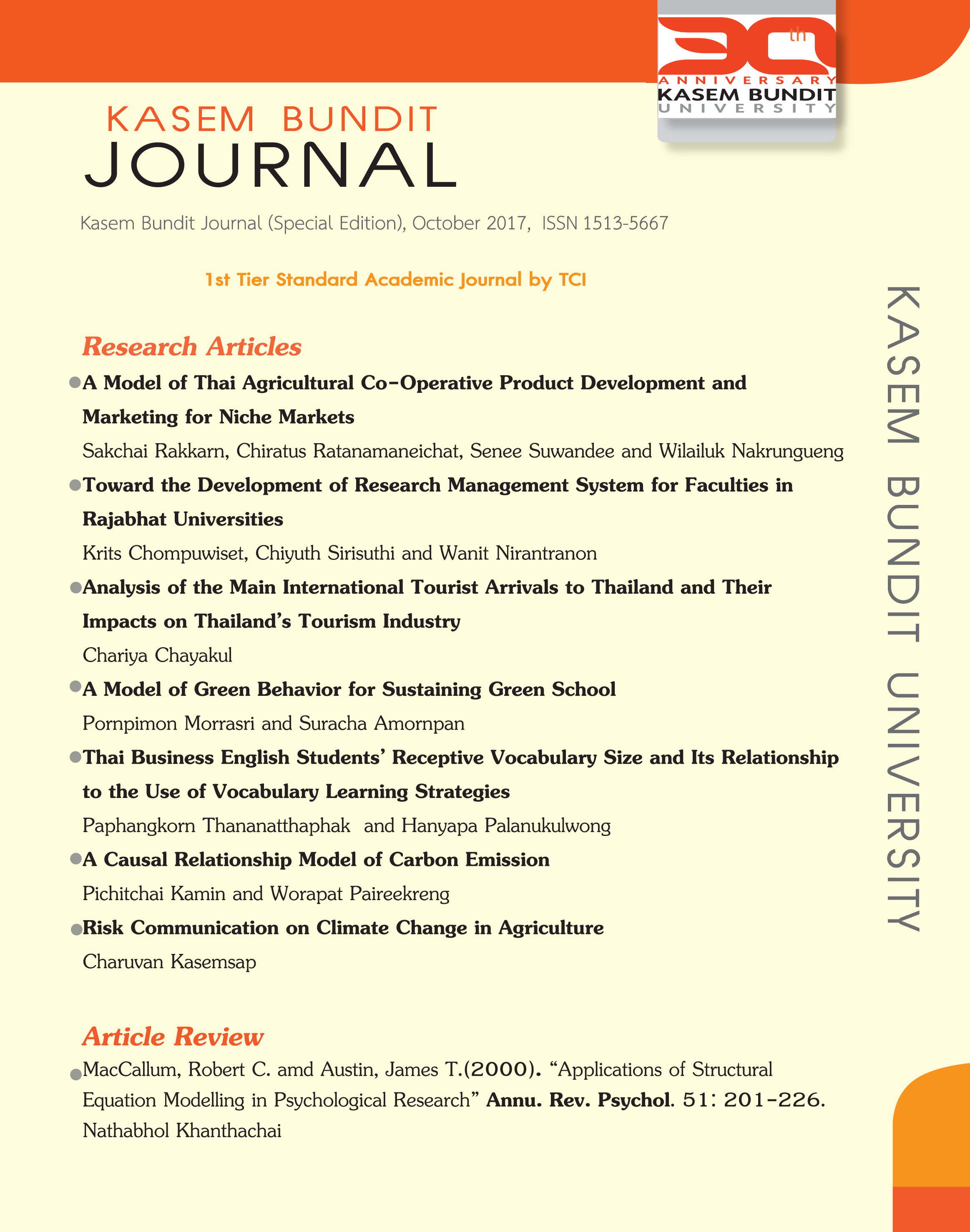A Model of Green Behavior for Sustaining Green School
Keywords:
Inspiration of Public Mind, Environmental Management, Environmental Education, Green BehaviorAbstract
This research aimed to develop a model of green behavior for sustaining green school. A questionnaire was used as the main tool for data collection from 275 students in levels four to six at Mahasarakharm University Demonstration School (Elementary) in the 2014 academic year. Structural Equation Modeling (SEM) was used for model verification. It was revealed that the exogenous variables, i.e., Environmental Education (EE) and Environmental Management (EM) could influence, through Inspiration of Public Mind (IPM), Green Behavior (GB) for 92.00 percent. Additionally,EE affected GB the most. Moreover, the exogenous variables of EE and EM were able to account for 78.00 percent variation in IPM while EE affected IPM the most.
References
Markus, Keith (2007). Structural Equation Modeling. Encyclopedia of Industrial and Organizational Psychology. New York: Sage.
Office of the United Nations Higher Commissioner for Human Rights (2012). Convention on the Rights of the Child. [Online] Available from http://www2.ohchr.org/english/law/crc.htm
Pimdee, P. et al (2012). Causal Relationship Model of Electrical Energy Conservation. European Journal of Social Sciences, 32(3): 306-315.
Phinnarach, K., Thiengkamol, N., and Thiengkamol, C. (2012). Causal Relationship Model of Community Strength. European Journal of Social Sciences, 34(3): 379-392.
Thiengkamol, N. (2009b). The Happiness and the Genius can be created before Born. Bangkok: Prachya Publication.
Thiengkamol, .N. (2011). Environment and Development Book 1. 4th Edition. Bangkok: Chulalongkorn University Press.
Thiengkamol, N. (2011i). Development of Model of Environmental Education and Inspiration of Public Consciousness Influencing Global Warming Alleviation. European Journal of Social Sciences, 25 (4): 506-514.
Thiengkamol, .N. (2012a). Development of A Prototype of Environmental Education Volunteer. Journal of the Social Sciences, 7(1): 77-81.
Thiengkamol, N. (2012b). Model of Psychological Factors Affecting Global Warming Alleviation. International Proceedings of Economic Development and Research, 44, 6-12.
Thiengkamol, N. (2012c). Causal Relationship Model of Four Noble Truths. Mediterranean Journal of Social Sciences, 3(11): 319-326.
Thiengkamol, N. (2012d). Model of Environmental Education and Psychological Factors Based on Inspiration of Public Consciousness Affecting Global Warming Alleviation. Mediterranean Journal of Social Sciences, 3(11): 435-444.
Ullman, J.B. and Bentler, P.M. (2003). Structural Equation Modeling. Hoboken, NJ:John Wiley & Sons, Inc.
Downloads
Published
How to Cite
Issue
Section
License
ทัศนคติ ความคิดเห็นใด ๆ ที่ปรากฏในวารสารเกษมบัณฑิตฉบับนี้เป็นของผู้เขียน โดยเฉพาะ มหาวิทยาลัยเกษมบัณฑิตและบรรณาธิการ ไม่จำเป็นต้องมีความเห็นพ้องด้วย







